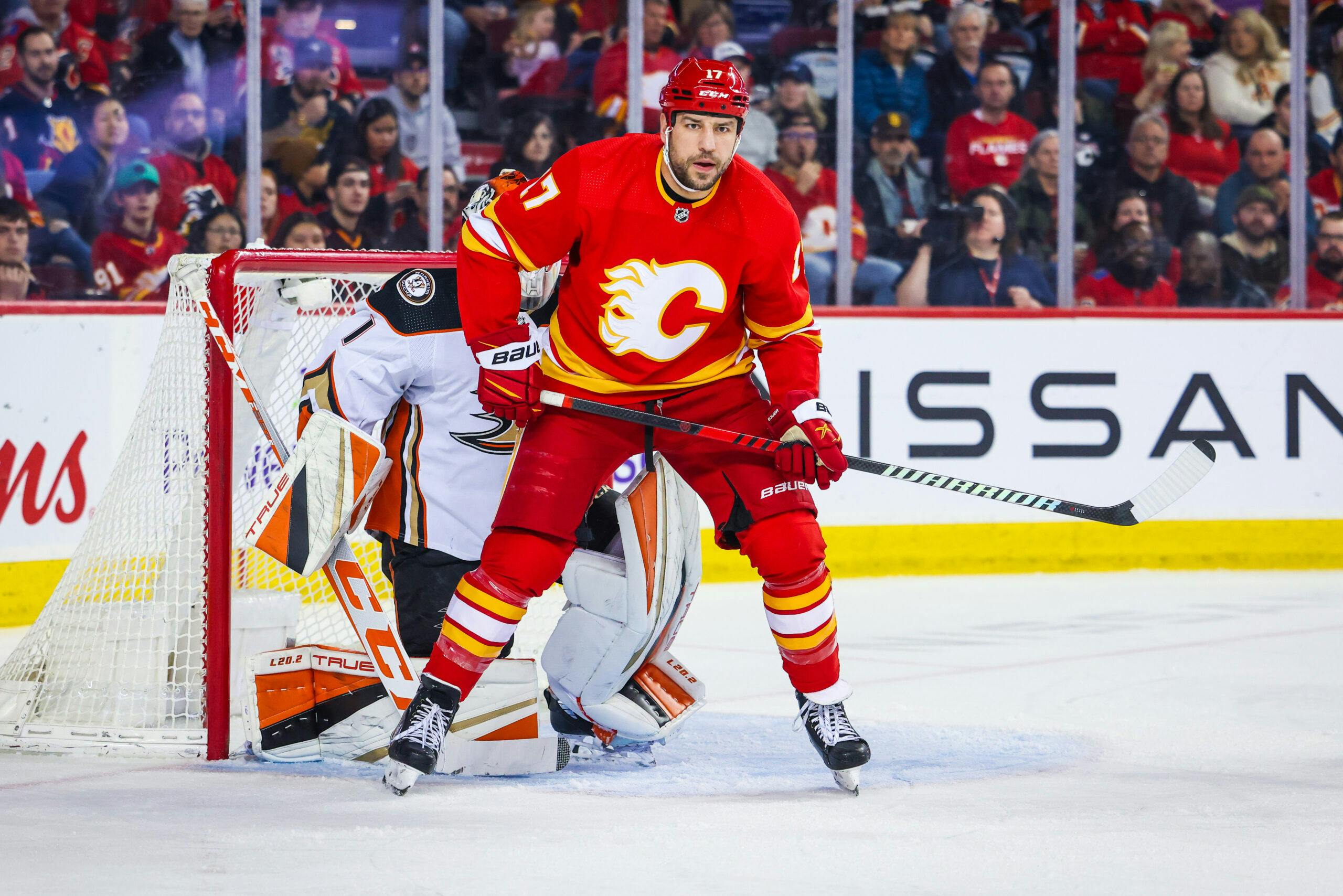Nation Sites
The Nation Network
FlamesNation has no direct affiliation to the Calgary Flames, Calgary Sports and Entertainment, NHL, or NHLPA
Looking back at the three trades between the Calgary Flames and Edmonton Oilers

Photo credit: © Sergei Belski-USA TODAY Sports
You can tell that a real rivalry exists in sports when it seems to bleed through from the fanbases into the players and even the front offices. Case in point: the Battle of Alberta. During the many, many years the Calgary Flames and Edmonton Oilers have co-existed in the National Hockey League, they’ve made just three trades.
Here are those three swaps.
The first trade: March 3, 2010
The Flames trade defenceman Aaron Johnson and a conditional third-round selection (2010 or 2011, Calgary’s choice) to the Oilers for defenceman Steve Staios.
General managers: Darryl Sutter (Calgary) and Steve Tambellini (Edmonton).
This was 2010’s trade deadline, the Flames were a point out of the Western Conference’s final playoff spot and the Oilers were in last place in the entire NHL, so asset accumulation was the name of the game in Edmonton and trying to get into the post-season was the goal in Calgary. (Sutter had previously made trades sending Dion Phaneuf to Toronto and Olli Jokinen and Brandon Prust to the NY Rangers.)
But the Flames won just 10 of their final 20 games, going 10-9-1 from deadline day onward and missing the playoffs by five points – missing the dance for the first time since 2002-03. The Oilers received Calgary’s third-rounder in 2011 and drafted Travis Ewanyk.
The second trade: November 8, 2013
The Flames trade forward Roman Horak and the rights to goaltender Laurent Brossoit to the Oilers for defenceman Ladislav Smid and goaltender Marc-Olivier Roy.
General managers: Jay Feaster (Calgary) and Craig MacTavish (Edmonton).
It was early in the season, neither team was particularly close to a playoff spot, and this deal seemed like both clubs looking to shuffle the decks a bit. The Oilers got a bit of youthful energy in the form of Horak, while the Flames got a veteran blueliner to provide a bit of stability for a young defensive group (and a young team in general).
Smid ended up finishing his NHL tenure on the long-term injury reserve due to a persistent back injury, but he was quite solid for the club when he was healthy.
The third trade: July 19, 2019
The Flames trade forward James Neal to the Oilers for forward Milan Lucic and a conditional 2020 third-round selection (conditional on Neal scoring at least 21 goals in and Lucic scoring at least 10 fewer goals than Neal in 2019-20).
General managers: Brad Treliving (Calgary) and Peter Chiarelli (Edmonton).
The Oilers signed Lucic in 2016 to a six-year deal. It didn’t really work for him in Edmonton, as he never really found his mojo. The Flames signed Neal in 2018 to a five-year deal. It didn’t really work for him in Calgary, as his expected top six spot instead went to Elias Lindholm. The Flames and Oilers effectively swapped square-peg contracts to see if the other could make things work.
The trade conditions became a bit of a mess. Neal had 21 goals and Lucic 8 goals when the 2019-20 season was suspended due to the COVID-19 pandemic. After extensive negotiations, eventually it was decided that the Flames would receive a third-round pick from Edmonton in either the 2020 or 2021 drafts; Edmonton opted to give up their 2021 pick. The Flames traded back in the third round with Los Angeles, ultimately getting Cameron Whynot and Jack Beck from the transaction, a pair of selections they eventually opted not to sign.
Lucic was pretty solid for the Flames during his three seasons, emerging as an effective (albeit fairly overpriced) role player.
Weirdly enough, each of the past three Flames and Oilers GMs have made trades with each other, but incumbent Oilers GM Ken Holland and incumbent Flames GM Craig Conroy have not (yet).
Should the Flames and Oilers make more trades with each other? Or has the quality of the first three swaps suggested that they’re a bad fit as trade partners? Let us know in the comments!
Breaking News
- Flames Prospect Roundup: How the standings shape up entering the holiday break
- NHL Notebook: Sidney Crosby takes sole possession of most points in Penguins’ franchise history
- FlamesNation Mailbag: Waiting for Santa with reader questions
- Flames injury news: positive signs for Martin Pospisil
- Recap: Martin Frk leads Wranglers to memorable Winter Wranglerfest win in more ways than one
